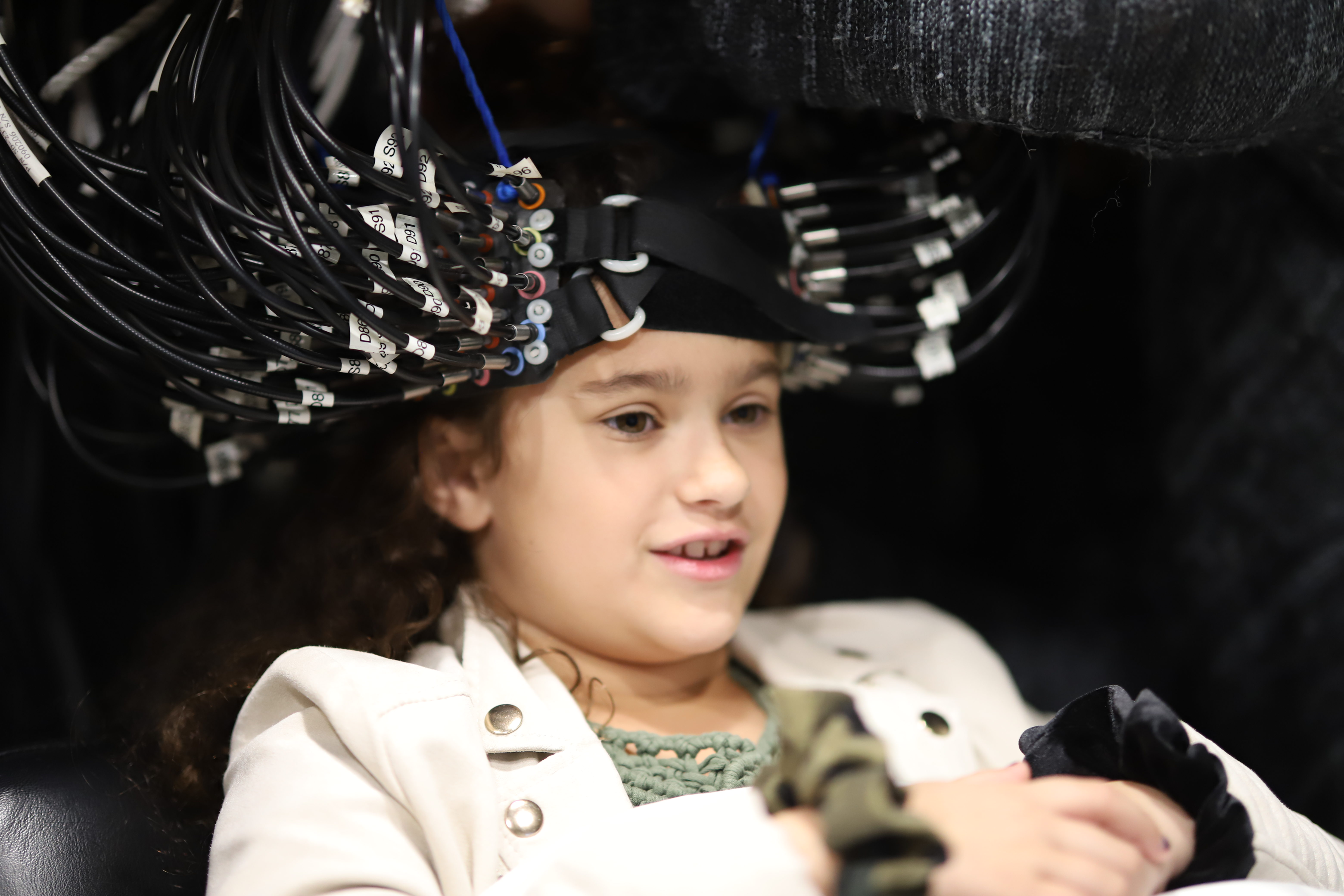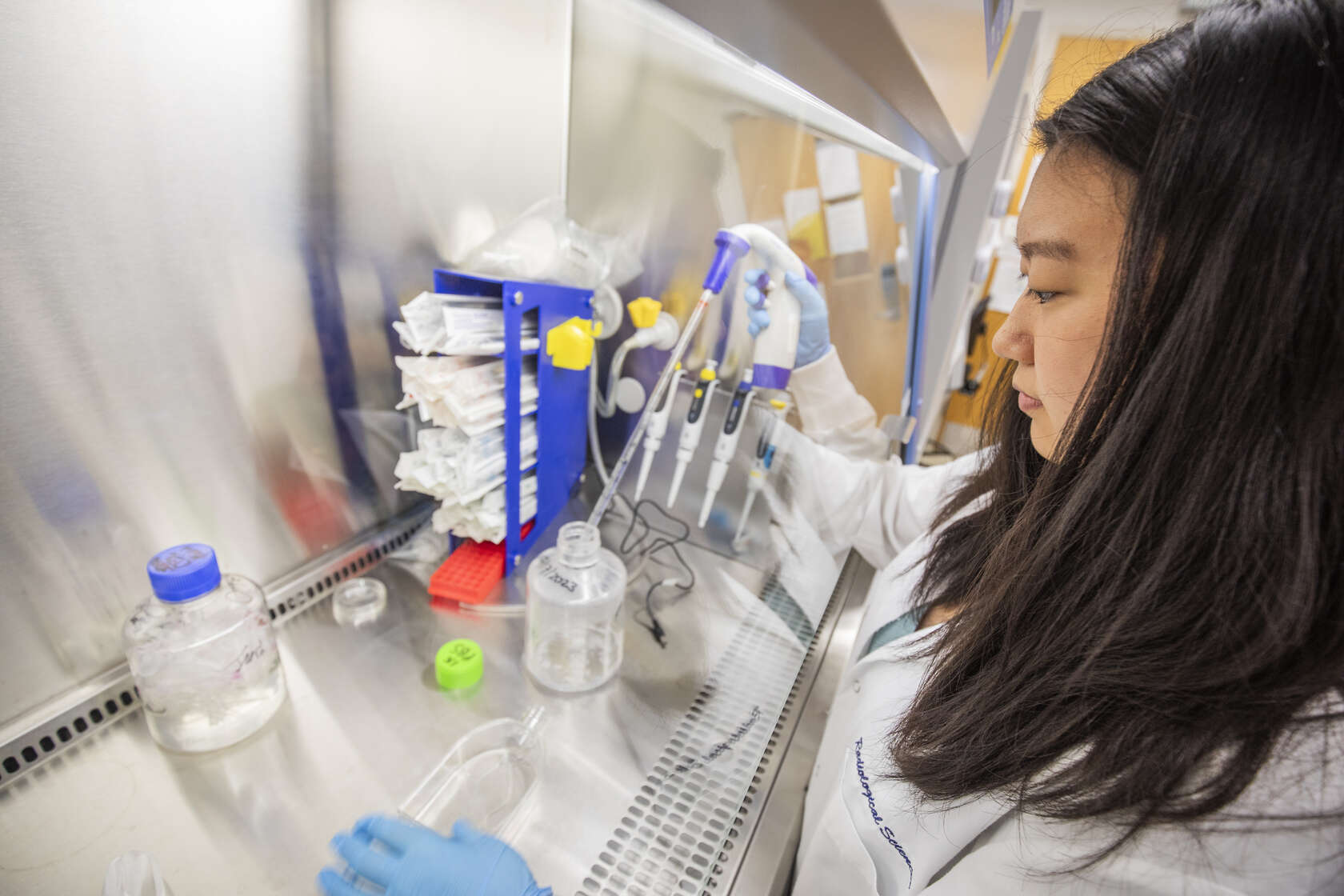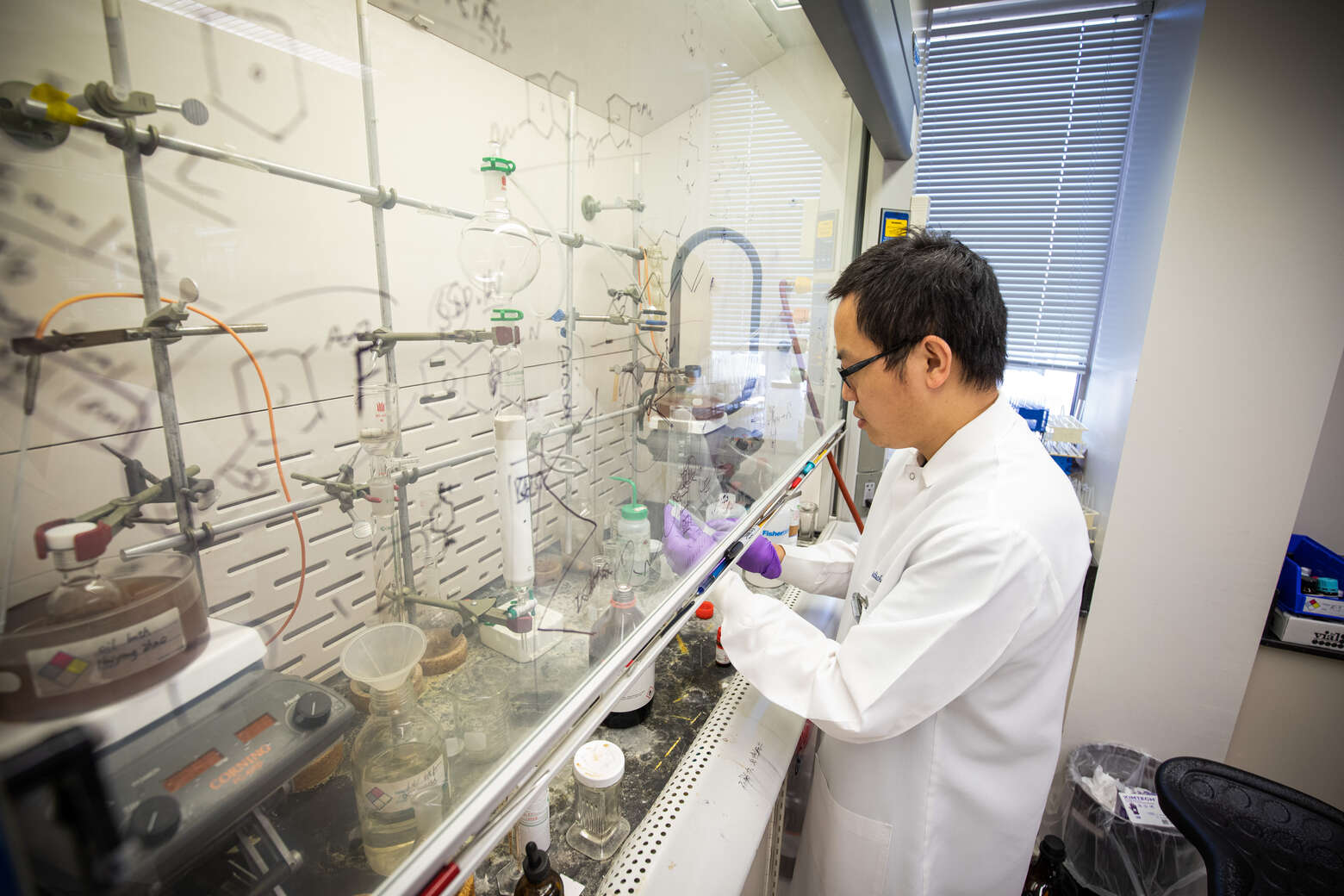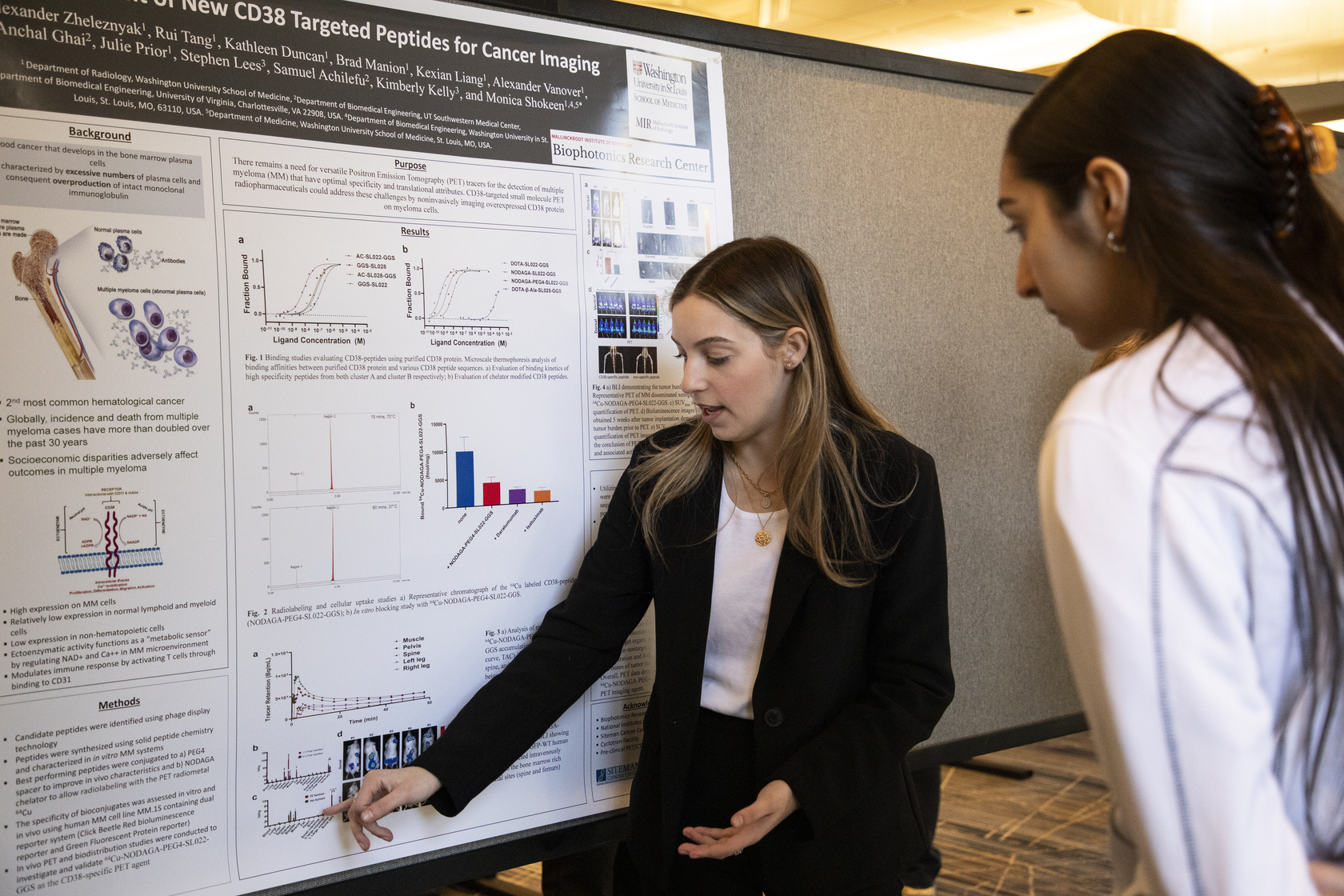Shedding Light on Autism

An imaging system developed at Mallinckrodt Institute of Radiology is being used to track brain function in children with and without autism spectrum disorder (ASD). Called diffuse optical tomography or DOT, the new imaging system makes movies of the brain’s response to everything, from daydreaming, to direct in-room social interactions, to watching movies, says Adam Eggebrecht, PhD, an instructor in radiology. So far, forty children, ages 18 months to 17 years old, are enrolled in the research project.
DOT doesn’t use a magnet like an MRI scan or radiation like a PET scan. Instead, it uses near-infrared light to measure brain activity with a cap-like device that kids wear. The ‘cap’ has fiber-optic cables that receives the “light” signal relating to different information about brain activity, says Eggebrecht. As different parts of the brain that support thought and activity become engaged, the brain changes color. “This change in color is essentially what we measure with DOT,” Eggebrecht says.
“By imaging brain function in children with and without autism, we hope to better understand how the brain works differently in people with autism. This may then help clinicians track the effect of treatments so we can better know not only if the treatments are working, but how they are working. These studies will also help us better understand how brain function develops throughout childhood in general.”
However, it’s not yet known if measuring brain function in children with DOT will provide an earlier diagnosis of autism. “That question is a focus of a lot of ongoing research here at Washington University and elsewhere,” Eggebrecht says. Early detection allows parents to seek intensive treatment sooner to reverse and/or minimize autistic symptoms in their child.





